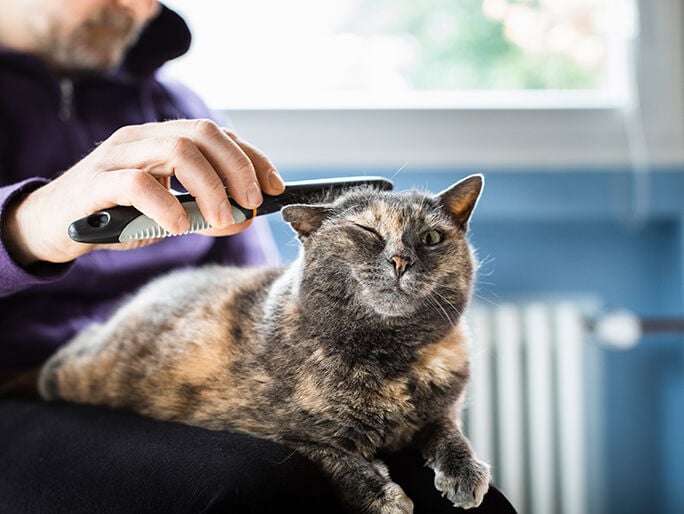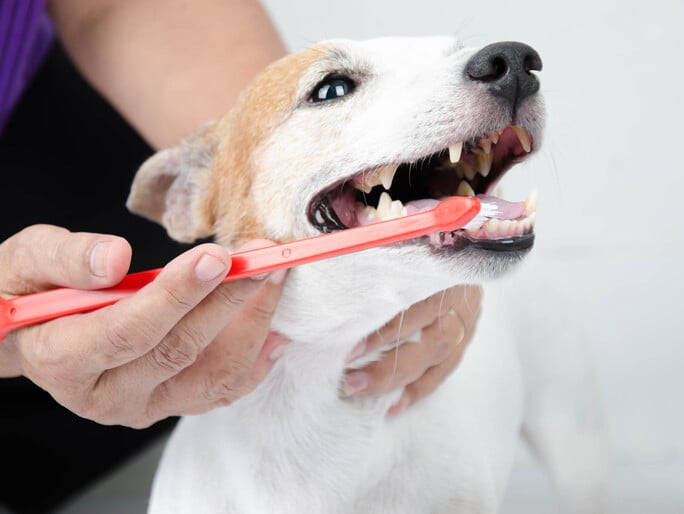how to clean cat ears
An easy step-by-step for cleaning your kitty’s pretty ears.
If your cat has ear mites or is prone to chronic ear infections, get ready to lend a helping hand.

What you need to safely clean cat ears
- A comfortable place to hold your cat
- Vet-recommended ear cleaner
- Cotton balls
- A clean towel
- Kitty treats
- A friend to help (if possible)
Cleaning your cat’s ears — with a minimum of yowling from you both
Your vet may recommend a schedule for regular ear cleaning to help cats with ear mites, cats undergoing treatment for ear infections, and even cats prone to recurring ear problems. Be prepared to get messy!
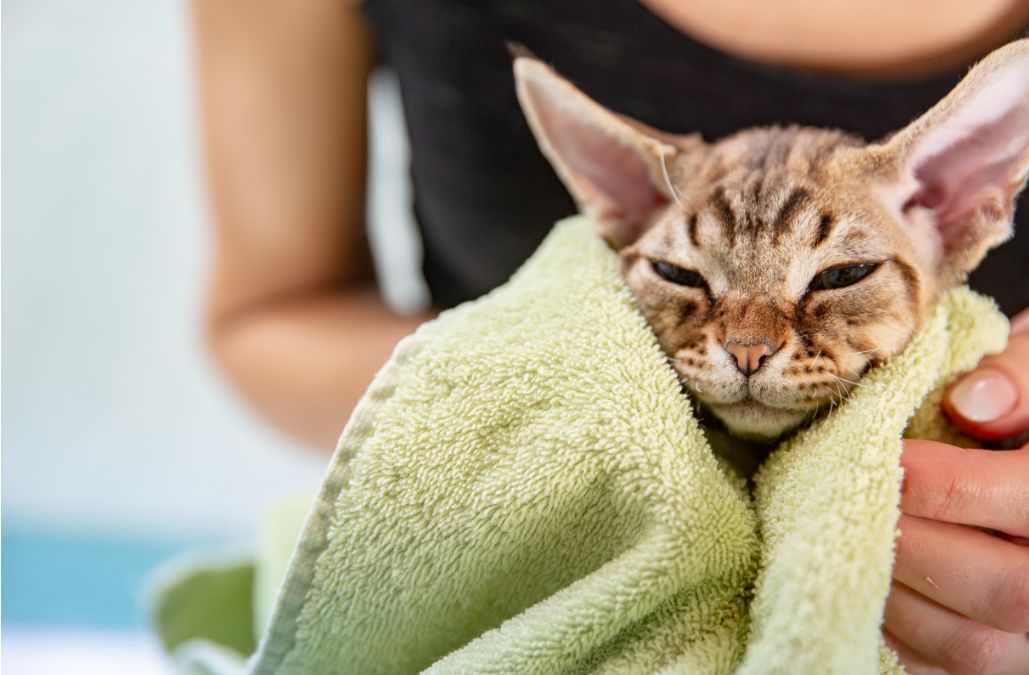
How often should you clean your cat’s ears?
Over-cleaning your cat’s ears can dry them out and increase the risk of an ear infection, so follow your veterinary team’s recommendations for how often it should be done. You may also need to clean your cat’s ears before applying medications for ear mites or infections. Be safe — if your cat simply won’t cooperate, ask for help!
Cat ear-cleaning supplies, plus what never to put in cat ears
You don’t need much to help keep your cat’s ears clean. Use your vet-recommended ear cleaner, some cotton balls, and a clean towel.
A few small favorite kitty treats for during or after is a nice touch. If you like, stand your ear cleaning solution in a bowl of warm water before you begin so the fluid won’t be cold in your cat’s ears.
Always avoid:
- Cotton swabs, which make it just too easy to push debris and wax into the ear canal. A gentle wipe with a clean cotton ball does a much safer job.
- Many home remedies and “natural” cures — including tea tree oil, apple cider vinegar, and hydrogen peroxide — are just not safe for your cat’s ear.
-
Cuddle your cat
Sit or stand in a safe, comfortable place with your cat, with your ear-cleaning supplies (like pre-soaked cotton balls) within easy reach. Make sure you’re stable at all times — and be aware that cat claws can damage clothing and furniture.
You may have a special hold that helps to keep your kitty calm and still. If not, here are a few to try:
Tabletop towel hold: Place your cat on the table. Drape the towel around their body and shoulders, then “hug” them close to your body.
Kitty burrito: Wrap your kitty safely in a towel, keeping their feet and claws inside and their head poking out (a bit like swaddling a baby). Hold the burrito with your non-dominant arm and use your other hand for dealing with the ears.
Friends to the rescue: Get a cat-loving friend or family member to gently and firmly hold your cat, whether on the table in a towel or swaddled in their arms.
No matter how you choose to hold your cat, never force an ear cleaning. If they struggle, yowl, or try to bite, let them go and try again later.
-
Inspect the ears
Make sure your cat is safe and calm. Then gently pull their ear slightly back from their head to expose the opening of their ear canal.
Check for foul odors, redness, or discharge — all signs of a possible ear infection. If you see any danger signs, stop and contact your vet for an appointment.
Use a dry cotton ball to wipe any wax or debris on the opening of the ear. (Not inside the ear canal — just the outside.)
-
Drip and massage
Soak a cotton ball in ear cleaner so it’s wet and dripping. Hold up your cat’s ear flap and gently squeeze the cotton ball so it drips ear cleaning solution into your cat’s ear.
Now give the base of your cat’s ear a mini-massage with your thumb and index finger to loosen up any wax or debris. (It’s possible your cat might enjoy this. They may also kick, so beware of being scratched!)
-
Shake and dry
After the ear massage, let your kitty shake their head a few times (this may be messy).
Blot the ear area dry with a cotton ball. Wipe away any goop that came out with the ear cleaning and head shaking. (Don’t stick anything down in the ear canal, just get the entrance clean.) Move onto the next ear as needed.
When you’re done, use a clean towel to mop up any ear cleaner spattered on the area (or you), and wash your hands. Tah-dah! Consider giving your sweet kitty a few small treats.
Mentioned in this article
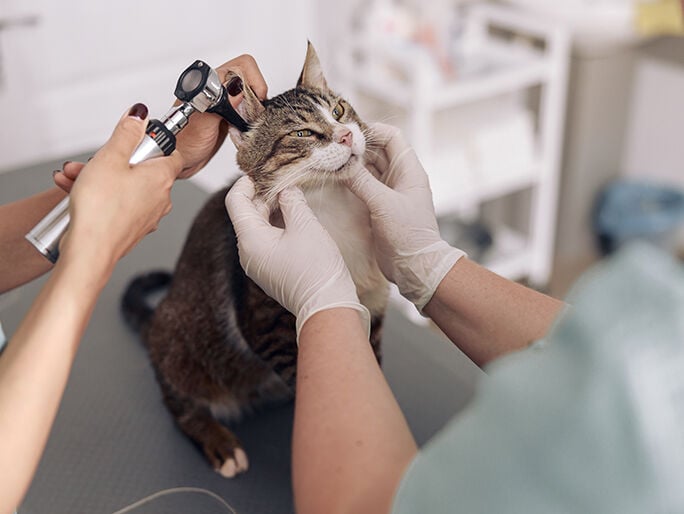
Does your cat have an ear infection?
Know the symptoms of ear issues in cats.
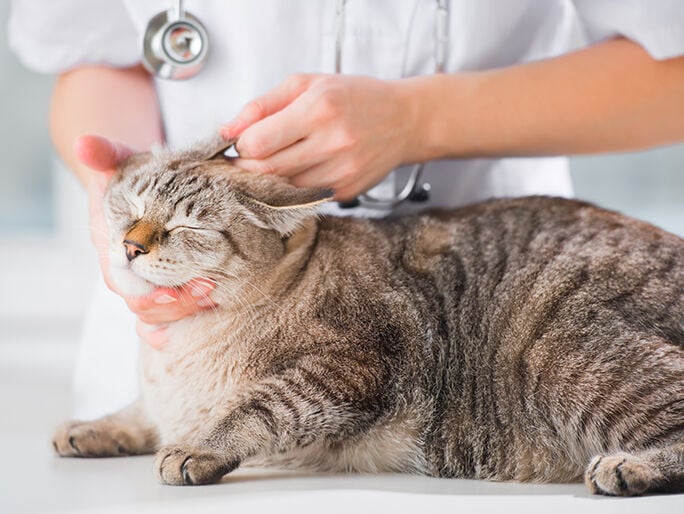
Does your cat have ear mites?
What to know about ear mites in cats and kittens.
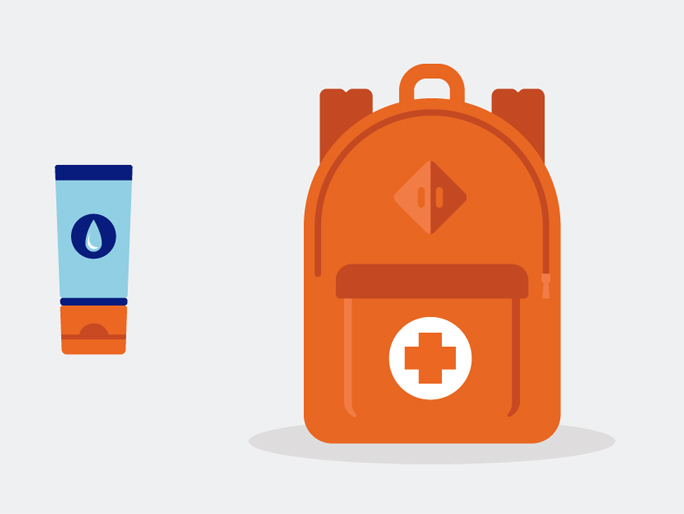
Ear care for cats
Does your cat have ear mites or an ear infection?

Need advice on flea control? Ping Pet Chat™!
Whether it's 3 a.m. or 3 p.m., connect with a real veterinary professional for immediate petcare advice. It's included in all Optimum Wellness Plans®!
Log in to start chattingHow Banfield can help with ear care for cats and dogs
We take happy, healthy pet ears seriously! Our vets can help you find out what’s causing your pet’s ear issues, work with you on a treatment plan, and prescribe safe and effective medications to help treat your pet. We can even work with you to help prevent future problems.

We can work with you to help manage chronic ear infections. If you notice your pet is getting ear infection after ear infection, let’s discuss underlying causes, solutions, and possible prevention for your pet’s issues.
We can provide guidance for cleaning and medicating dog and cat ears. Infected ears can be tender, which may make it rough to treat them at home. Let us know if your pet absolutely refuses to cooperate — we’re here to help!
We can help identify and manage food or environmental allergies that can cause ear infections and skin itchiness and irritation. If you suspect an allergy is causing your pet to sneeze, wheeze, itch, or scratch, we’re here with professional guidance to help your pet.
Any other health concerns?
Just let us know. We’re here to help with loving veterinary care, including your pet’s adorable ears.
 Mites and mange
Mites and mange Podcast - Not Just Fluff
Podcast - Not Just Fluff


